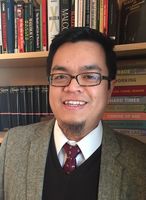
Navigating the Yusūf/Joseph Narrative
For those of us who teach on Islam and Muslims, the teaching of the narrative of Joseph, or Yusūf in Arabic, is old hat. It has proven to be a useful pedagogical device for placing the Qur’an in conversation with the Hebrew Bible. The narrative is easy to set for side-by-side comparative readings (Qur’an 12:1-111 and Genesis 37:1-50:26), and this particular Qur’anic narrative of a prophet is self-contained making it especially accessible to students. In contrast, the Qur’anic treatment of other figures like Moses, Abraham, Jesus, and Mary is spread across many different places. Having students read the biblical and Qur’anic narratives of Joseph alongside one another, when framed carefully, can be an incredibly productive and engaging learning experience for students. It raises questions concerning intertextuality and compels students to ask questions concerning language, authorial intent, and reception.
Nevertheless, as many of you may well know, the assignment does not always go well. It is not a “set it and forget it” kind of assignment. Over the years, how I have taught the Yūsuf/Joseph narrative has changed as I continually adapt the unit to the reactions and responses of my students. Unsurprisingly, they are not all approaching the texts with the same set of presuppositions and sensitivities. I see in some of the papers that my students submit a dismissal of the Qur’anic narrative as purely derivative of the biblical one. Others walk away perplexed by what they believe to be the overly elliptical or densely opaque language of the Qur’an. With both narratives emerging from historical contexts greatly removed from those of today, I also find students conflating the Sitz im Leben or social contexts of the biblical and Qur’anic accounts. All ancient societies in arid climates start blurring together for them. What I would like to share are some of the changes that I have made to improve how I frame the assignment and guide my students.
1) I encourage my students to consider reading the passage from the Qur’an first. Students want to begin with the biblical account either out of familiarity or a desire to read the material in historical order, but this can prime them to privilege the biblical account as the “authentic” or “original” one. By flipping the reading order, how they go about processing the two texts is substantially shifted. This is evident in our class discussions. Typically the students end up split in which they read first, but this difference itself has generated fascinating discussions about how each student perceives certain narrative elements as either missing, added, extraneous, abbreviated, or prolonged depending on which scripture is granted “priority.”
2) If time permits in a semester, I try to provide a broader introduction to the work being done by the authors of these scriptural texts. While this naturally takes place with the Qur’an, since it is the subject of my course, it takes more effort to carve time out to properly situate the Hebrew Bible. What seems to be the Hebrew Bible’s larger objective? Who is its audience(s)? What overarching story is it trying to tell with its many books? How does it tell that story? Who is emphasized and why? Of course, we entertain the same questions when it comes to the Qur’an. In sum, I am trying to get students to think, what sort of work is each of these narratives doing in their respective historical and cultural settings?
Attention is also paid to language. I have my students reflect and discuss on why the Qur’an and Bible seem to speak in different ways. How does naming, or the lack thereof, figure into the telling of the story and what effect does it have for the reader? This is also an opportunity for students to do some translation comparisons, a tactic I discussed in an early post. The point of the narrative assignment, of course, is not only the content of the accounts themselves, but drawing attention to the ways that the stories are told.
3) I have also found it helpful to extend the Yūsuf/Joseph unit on occasion by moving beyond scripture and looking at how the narrative is received and reinterpreted by later historical communities. What life has the Yūsuf/Joseph narrative had? Obvious choices are the musical and film Joseph and the Amazing Technicolor Dreamcoat and the array of religious art, both Christian and Islamic, that has been produced around the story. What I have found more compelling and useful, however, is the novel Paradise by Abdulrazak Gurnah which uses the Yūsuf/Joseph narrative to tell the history of East Africa during the period of European colonization. Both the setting and the characters of this book serve to further decenter our discussions from biblical normativities and the western cultural prism. We are dealing, after all, with Africans and Muslims under colonialism. Although the novel adheres relatively loosely to the scriptural accounts of Yūsuf/Joseph, it nonetheless allows us to revisit the narrative with a more contemporary lens as we explore questions of power, identity, and belonging. It is also a powerful reminder for my students of the ways that art and literature can intersect with religion and scripture. These narratives are not just old stories, but important ways of making meaning and shaping the present.
Thanks for writing this! I regularly teach the story and am grateful for new ideas.